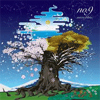


|

|

|

|

|

|

|

|

|
 |
 |
||||||||||
|
|||||||||||
|
|
|||||||||||
|

No. 9
Micro Films Locust 2004 A-  aptop music lacks a recording space. The music emanates from flat circuitry that, despite the ever-expanding tools available to the digital composer, doesn’t have the subtle charms of a real musical environment (studio, bedroom, barn, etc.). But the computer’s virtual space isn’t necessarily a limitation; the dislocation of laptop music from a real space opens a new avenue by which to explore the concept of space in music. aptop music lacks a recording space. The music emanates from flat circuitry that, despite the ever-expanding tools available to the digital composer, doesn’t have the subtle charms of a real musical environment (studio, bedroom, barn, etc.). But the computer’s virtual space isn’t necessarily a limitation; the dislocation of laptop music from a real space opens a new avenue by which to explore the concept of space in music.
The human mind, when surrounded by sound, will create a space. Ambient composers (and many digital-noise nuts) exploit this tendency to invoke imaginary spaces. Their music is blurry and disorienting, like seeing the world through a thin blanket, and it is often compelling for those reasons. Joe Takuyuki, the man behind No. 9, removes this blanket. The spaces he creates are crystal clear and bursting with detail. Micro Films has a unique sound. Takayuki integrates field recordings, live instruments, and remarkably fresh, jazz-informed drum programming into a shimmering bed of quiet computer tones. The album is a study of forgotten spaces: the vibrant insect microcosm, the smoky innards of a jazz-inflected dance club, and the sunny expanse of birds in flight. His worlds feel eerily real. The first track, “From Mushi No-Ne” begins with chirping crickets and a beautiful echoing digital tone. A calm androgynous voice, chopped digitally into percussive hiccups enters. As the insect chorus adds members, the voice multiplies and bounces around the soundscape, becoming lost in the meditative bell-like tones only to re-emerge startlingly. The track is so alive that it is surreal—a dream world distorted by digital trickery. The inspired bass guitar opening “Get Gut” signals a move indoors. Broken drumming flirts with the bass line before blossoming into an agile drum-n’-bass inflected beat. A trumpet blurts occasionally, overflowing with energy. Grunts pop up here and there, adding another layer of rhythm, but also suggesting the exclamations of performers onstage. Meanwhile, quiet sounds chatter almost inaudibly in the background, mimicking the subdued conversation of an audience. When the drummer wears out, with a final grunt, and the bass line walks right out of the room, these background tones get louder. The track ends in a gorgeous shower of tones that both complements and applauds the departed musicians. Another highlight is awkwardly titled “With Millions of Love.” Bird sounds flutter about the track, while an acoustic guitar strums a simple melody. Computer blips dance around the guitar. A leisurely hi-hat beat arrives to liven things up, and finally a second guitar drops a gorgeous melodic counterpoint. The song is so warm you’ll forget the winter. Takayuki stuffs each track with great moments. His painstaking attention to detail is obvious, but Micro Films is not obsessively over-produced. Rather, a sense of free-spirited whimsy pervades the album, and you too will feel a little lighter if you drift into his world.  Reviewed by: Bryan Berge Reviewed on: 2005-01-27 Recent Reviews By This Author
Comments Log In to Post Comments
|
|
|||||||||||||||||
| all content copyright 2004 stylusmagazine.com | |||||||||||||||||||